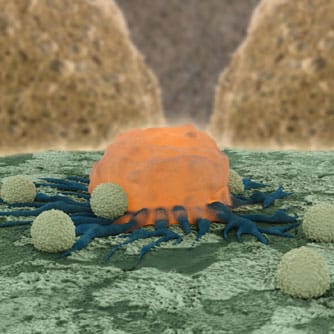University of Pennsylvania (Pennsylvania, USA) researchers have successfully genetically engineered the immune cells of 12 HIV positive patients to resist infection, and decreased the viral loads of some patients taken off antiretroviral drug therapy (ADT) entirely—including one patient whose levels became undetectable. Carl H. June, from Perelman School of Medicine, and colleagues utilized a technique known as zinc finger nuclease (ZFN) technology, to modify the T cells in 12 HIV positive patients —a “molecular scissors,” of sorts, to mimic the CCR5-delta-32 mutation. That rare mutation is of interest because it provides a natural resistance to the virus, but in only 1% of the general population. By inducing the mutations, the scientists reduced the expression of CCR5 surface proteins. Without those, HIV cannot enter, rendering the patients’ cells resistant to infection. For the study, the team infused the modified cells –known as SB-728-T—into two cohorts of patients, all treated with single infusions—about 10 billion cells—between May 2009 and July 2012. Six were taken off antiretroviral therapy altogether for up to 12 weeks, beginning four weeks after infusion, while six patients remained on treatment. Infusions were deemed safe and tolerable, the authors report, and modified T cells continued to persist in the patients when tested during follow up visits. One week after the initial infusion, testing revealed a dramatic spike in modified T cells inside the patients’ bodies. While those cells declined over a number of weeks in the blood, the decrease of modified cells was significantly less than that of unmodified T cells during ADT treatment interruption. Modified cells were also observed in the gut-associated lymphoid tissue, which is a major reservoir of immune cells and a critical reservoir of HIV infection, suggesting that the modified cells are functioning and trafficking normally in the body. The study also shows promise in the approach’s ability to suppress the virus. The viral loads (HIV-RNA) dropped in four patients whose treatment was interrupted for 12 weeks. Observing that: “HIV RNA became undetectable in one of four patients who could be evaluated,” the study authors write that: ‘The blood level of HIV DNA decreased in most patients.”
HIV Breakthrough via Gene Therapy
Tebas P, Stein D, Tang WW, Frank I, Wang SQ, Lee, June CH, et al. “Gene editing of CCR5 in autologous CD4 T cells of persons infected with HIV.” N Engl J Med. 2014 Mar 6;370(10):901-10.
RELATED ARTICLES




